Bugs that consume clothing and other textiles can wreak havoc on one’s wardrobe, causing damage to expensive fabrics and ruining cherished pieces. The culprits behind these incidents are typically moths, carpet beetles, or silverfish. As such, it is essential to understand the biology and behavior of these insects in order to identify and control them effectively.
In this article, we will discuss how to identify and control bugs that eat clothes. By examining the physical characteristics of these pests, as well as their feeding patterns and habitats, we can develop a comprehensive approach to managing infestations. Whether you are a homeowner looking to protect your clothing collection or a professional cleaner seeking solutions for clients’ textile problems, the information provided here will prove invaluable in your efforts to serve others.
Common Types Of Clothing-Eating Bugs
Clothing-eating bugs are a common household pest that can cause significant damage to clothing, carpets, and other fabrics. Identifying an infestation early is crucial in preventing further damage. There are several types of clothing-eating bugs that homeowners should be aware of.
The most well-known of these pests is the clothes moth. These small, winged insects are often found in dark, humid areas of the home, such as closets and attics. Clothes moths feed on natural fibers like wool, silk, and cotton, making them a particular nuisance for those who store vintage or heirloom items.
Another type of clothing-eating bug is the carpet beetle. These oval-shaped insects can be found in carpets, furniture upholstery, and stored clothing. They feed on natural fibers but also eat other organic materials like pet hair and dead insects.
Prevention techniques for clothing-eating bugs include keeping fabrics clean and dry to reduce moisture levels that attract pests. Vacuuming regularly can also help remove any eggs or larvae that may be present. In addition, storing clothing in sealed containers or garment bags can prevent infestations from spreading.
When it comes to identifying an infestation of clothing-eating bugs, homeowners should look out for signs like small holes in fabrics or shed skins from larvae. By being vigilant and taking preventative measures early on, homeowners can avoid costly damage caused by these pesky pests. In the next section, we will discuss the physical characteristics of moths to aid in identification.
Physical Characteristics Of Moths
Moths, belonging to the order Lepidoptera, are well-known for their strikingly beautiful wings. However, their larvae can cause significant damage to natural fibers such as wool and silk. Understanding moth behavior is essential in devising effective moth prevention techniques.
Moths have a fascinating life cycle that involves four stages: egg, larva, pupa, and adult. The eggs hatch into caterpillars or larvae that feed on natural fibers found in clothes and carpets. Larvae are active during the night and seek dark corners where they spin cocoons before transforming into pupae. After a few weeks, the adult moth emerges from the cocoon and begins the mating process.
To prevent moths from damaging clothes and other textiles, it is necessary to disrupt their life cycle by eliminating breeding grounds. Good hygiene practices such as regular cleaning of wardrobes, drawers, and carpets can help reduce the likelihood of infestation. Store clothing in sealed containers or bags made of synthetic materials that moths cannot penetrate.
Understanding moth behavior is critical in identifying infestations early on and taking appropriate measures to prevent damage to clothes and other textiles. By following good hygiene practices and using effective moth prevention techniques, individuals can protect their clothes from these pesky insects. In the next section, we will examine the physical characteristics of carpet beetles – another common insect pest that can cause significant damage to textiles without proper control measures.
Physical Characteristics Of Carpet Beetles
After discussing the physical characteristics of moths, it is important to also touch upon the physical characteristics of carpet beetles. While moths are notorious for munching on our clothes, carpet beetles can also cause significant damage to fabrics and other household items. Despite their small size, these pests can wreak havoc on our belongings.
Carpet beetles go through several life cycle stages, starting as eggs and eventually developing into larvae before reaching adulthood. The adults themselves do not cause damage; rather, it is the larvae that feed on natural fibers such as wool, silk, and cotton. These pests are known for their behavior patterns of feeding in dark, undisturbed areas such as closets or storage spaces.
To better understand how to control and identify bugs that eat clothes, here are some key points about carpet beetles:
- They are attracted to light-colored clothing.
- They can enter homes through windows or doors.
- Infestations may be identified by finding shed skins or fecal pellets.
- Regular cleaning and vacuuming can help prevent infestations.
As an entomologist studying these pests, it is crucial to have a detailed understanding of their physical characteristics and behavior patterns. By doing so, we can better develop strategies for controlling infestations and protecting our belongings from damage. In the next section, we will delve into the physical characteristics of another common pest: silverfish.
Physical Characteristics Of Silverfish
Silverfish are small wingless insects that belong to the order Zygentoma. They are commonly found in households and are known for their quick movements and silvery scales that cover their bodies. These insects have a unique appearance, with a flattened body that tapers towards the rear and three long bristles at the rear end.
Silverfish exhibit various behavioral patterns depending on their habitat preferences. They prefer dark and damp places such as closets, basements, bathrooms, and kitchens. They are nocturnal creatures that feed on carbohydrates, particularly sugars and starches found in clothing fibers, wallpaper glue, books, paper products, and other household items. Silverfish can also survive for months without food or water due to their ability to lower metabolic rates.
To identify silverfish infestation in your home, it is essential to understand their behavioral patterns and habitat preferences. Look out for signs such as sightings of live insects or shed skins resembling fish scales around baseboards, closets, bookshelves or windowsills. Additionally, check for holes or damage in clothing fabrics made from natural fibers like cotton or wool. If you suspect an infestation of silverfish in your home or business premises, seek professional pest control services to eradicate these pests effectively.
Signs Of Infestation
Moth larvae are a common cause of clothes damage, and their presence is often identified by small holes in fabric or a webbing-like material. Identifying the type of infestation is important for determining the best course of control, as different species have different control needs. Preventative measures, such as regular laundering and storage of clothes in airtight containers, are important in reducing the presence of moth larvae and other pests. Visual inspections of clothing should be conducted regularly to identify infestations, since early detection can allow for more effective treatment.
Moth Larvae
Identifying signs of infestation is crucial in controlling and preventing further damage caused by moth larvae. Moth larvae are the destructive pests that can cause harm to your clothes, carpets, and other home textiles. These pests have a life cycle of four stages – egg, larvae, pupae, and adult. The larvae stage is the most damaging as they feed on natural fibers such as wool, silk, and cotton.
During the larvae stage, moth larvae feed on natural fibers and create web-like tunnels in fabrics. They often hide in dark places such as closets or under furniture where they can easily find food sources. It is important to note that moth larvae are attracted to soiled fabrics with sweat or food stains. To control moth larvae infestation naturally, one can use cedar chips or lavender sachets as these scents repel them.
Getting rid of moth larvae naturally requires consistent effort in cleaning and storing garments properly. Regularly vacuuming carpets and rugs can also help eliminate any potential hiding places for moth larvae. In addition to natural remedies, pesticide sprays may be used but it is important to follow safety guidelines when handling chemicals. By identifying signs of infestation early on and taking preventative measures, you can effectively control and prevent further damage caused by these destructive pests.
Clothes Damage
The presence of moth larvae in your home can cause significant damage to your clothes and other textiles. As an entomologist, it is important to identify signs of infestation early on to prevent further damage. One common sign of infestation is the presence of holes or web-like tunnels in clothing made of natural fibers such as wool, silk, and cotton. Moth larvae feed on these fibers during their larvae stage, causing irreversible damage if left unchecked.
To protect your clothes from moth larvae damage, it is crucial to take preventative measures. Regularly cleaning and properly storing garments can help deter moth larvae from feeding on them. Avoid leaving dirty clothes with sweat or food stains lying around as this attracts moth larvae. Home remedies such as using cedar chips or lavender sachets also act as natural repellents for these pests.
In addition to protective measures, it is essential to be aware of the potential consequences of a full-blown infestation and take action promptly when necessary. If you notice any signs of moth larvae infestation in your home, consider seeking professional help or using pesticide sprays but always follow safety guidelines when handling chemicals. By being proactive in identifying signs of infestation and taking appropriate steps, you can effectively control and prevent further damage caused by these destructive pests.
Feeding Habits Of Clothing-Eating Bugs
Clothing-eating bugs, commonly known as fabric pests, have been the bane of many homeowners for centuries. Despite their small size, they can cause significant damage to clothing made of natural fibers such as wool, silk and cotton. Their feeding habits are unique and intriguing, making them fascinating subjects for study. The feeding preferences of these bugs vary depending on the species and stage of their life cycle.
Fabric pests have a complex life cycle that involves four stages: egg, larva, pupa and adult. During the larval stage, the insects feed voraciously on natural fibers found in clothing, bedding and carpets to obtain protein needed for their growth. As they progress towards the pupal stage, their appetite decreases significantly until they emerge as adults with no interest in food whatsoever. Interestingly enough, it is only during the larval stage that these insects can cause significant damage to textiles.
The feeding preferences of fabric pests are influenced by various factors such as species type and age. In general, they tend to prefer clothing made from natural fibers that contain animal proteins such as wool or silk over synthetic materials like polyester or nylon. Certain species have also been known to be more attracted to clothing stained with sweat or food particles due to the presence of additional nutrients. Understanding the feeding habits and preferences of these insects is crucial in identifying and controlling infestations in homes.
Moving on from understanding how these bugs feed on natural fibers, it is important to identify which types of textiles are most vulnerable to infestation by fabric pests.
Preferred Textiles For Infestation
When it comes to preventing clothes from being infested with bugs, it is important to consider the types of textiles that are most resistant to these pests. Wool and silk, for instance, are highly susceptible to damage from moth larvae. This is because these materials contain keratin, which is a protein that moth larvae feed on. On the other hand, synthetic fabrics like nylon and polyester do not contain keratin and therefore are less attractive to these pests.
Cotton is another material that is prone to infestation by bugs such as silverfish and firebrats. This is because cotton provides a food source for these pests in the form of cellulose fibers. However, there are alternative textiles available that are less appealing to these insects. For example, linen and rayon do not contain as much cellulose as cotton and thus may be less likely to attract silverfish or firebrats.
In conclusion, selecting the right type of textile can be one of the best prevention methods when it comes to controlling bugs that eat clothes. By choosing fabrics that are less hospitable to these pests, you can reduce the likelihood of an infestation occurring in your wardrobe or storage area. In the next section, we will discuss additional preventative measures that can be taken in order to protect your clothing from bug damage.
Preventative Measures
Having identified the preferred textiles for infestation in the previous section, it is now essential to move on to preventative measures. The first and foremost step in controlling and identifying bugs that eat clothes is by maintaining cleanliness and hygiene. Keeping the wardrobe clean, dry, and well-ventilated can go a long way in preventing an infestation. Regular vacuuming of carpets, curtains, and other fabrics can also help keep the bugs at bay.
DIY solutions are also an effective way of controlling an infestation. One such solution involves the use of cedar chips or essential oils as a natural deterrent against moths and other pests. Placing sachets or hanging bags filled with these materials in wardrobes and drawers can help repel insects without causing harm to humans or the environment. Other eco-friendly options include using lavender or peppermint oil, which have insect-repelling properties.
In conclusion, preventive measures such as maintaining cleanliness, using DIY solutions, and opting for eco-friendly options are crucial in identifying and controlling bugs that eat clothes. Such methods not only prevent infestations but also promote healthy living while being mindful of the environment. In the next section, we will explore some natural remedies for infestation that are safe, affordable, and easy-to-use alternatives for those who prefer non-toxic solutions.
Natural Remedies For Infestation
A homeowner in a humid region of the United States discovered a moth infestation in her closet. After identifying the larvae as clothes moths, she sought natural remedies to avoid using chemical treatments. With DIY solutions and herbal remedies, the homeowner was able to control and eventually eliminate the infestation.
One effective natural method is freezing clothing for at least 72 hours. This kills any eggs or larvae that may be present. Another solution is to vacuum frequently and dispose of the bag immediately after each use. The odor of cedar chips or sachets can also repel clothes moths. Similarly, lavender oil is a natural deterrent that can be applied to cotton balls and placed in drawers or closets.
Herbal remedies such as neem oil and eucalyptus oil have also been found to be effective in controlling clothes moth populations. These oils can be mixed with water and sprayed onto clothing or added to wash cycles for an added boost of protection. Using these natural remedies not only avoids exposure to harmful chemicals but also saves money in the long run.
Moving forward, it’s important to note that while natural remedies can be effective, they may not completely eradicate an infestation. In cases where infestations are severe or persistent, chemical treatments may be necessary. In the following section, we will discuss various options for chemical treatments for infestation control.
Chemical Treatments For Infestation
Natural remedies can be an effective way to control and prevent infestation by bugs that eat clothes. However, for those who prefer non-chemical alternatives, there are various methods to choose from. One option is freezing clothes in a sealed bag or container for several days to kill any bugs or eggs. Another method is placing clothes in direct sunlight, as the heat and UV rays can also eliminate pests.
It’s important to note that while natural remedies may be less toxic than chemical treatments, they may not be as effective in completely eradicating an infestation. Additionally, some natural remedies such as essential oils or herbal sachets may have adverse effects on fabrics if not used properly. It’s best to research and carefully follow instructions when using these methods.
Ultimately, the decision between natural remedies and chemical treatments comes down to personal preference and the severity of the infestation. Those with extensive damage or a persistent problem may require professional pest control services for complete eradication. In the next section, we will explore chemical treatments as another option for controlling bugs that eat clothes.
Professional Pest Control Services
The world of pests is vast and complex, with a multitude of species that can invade and cause harm to our homes and belongings. Among these pests are the notorious clothing-eating bugs, such as moths and carpet beetles. These tiny creatures can wreak havoc on our wardrobes and carpets, leaving behind unsightly holes and damage. However, with the help of professional pest control services, homeowners can keep these pests at bay.
Regular pest control services offer a wide range of benefits for homeowners looking to protect their homes from unwanted visitors. These services use safe and effective methods that have been proven to eliminate pests without harming humans or pets. By investing in regular pest control treatments, homeowners can save money in the long run by preventing costly damage caused by pests such as clothing-eating bugs.
While professional pest control services are highly effective in preventing and eliminating clothing-eating bugs, there are also some DIY methods that homeowners can use to identify and control these pests. One effective method is to regularly inspect clothing for signs of damage or infestation. Additionally, keeping closets clean and clutter-free can help prevent infestations from occurring in the first place.
As an entomologist, I understand the importance of maintaining a clean environment to prevent the spread of pests such as clothing-eating bugs. By taking preventative measures such as regular pest control treatments and practicing good hygiene habits at home, we can protect our belongings from damage caused by these pesky creatures. In the next section, we will explore some tips for maintaining a clean environment to keep your home free from unwanted guests.
Maintaining A Clean Environment
Effective cleaning techniques are important in maintaining a clean environment. This is especially true when it comes to preventing pests from invading your home. Bugs that eat clothes can cause significant damage to your wardrobe, which can be costly to replace. To prevent this from happening, it is essential to keep your living space clean and organized.
One of the most effective cleaning techniques for preventing clothing-eating bugs is vacuuming. Regularly vacuuming carpets, rugs, and upholstery will help remove any eggs or larvae that may have been deposited by these pests. Additionally, wiping down surfaces with a damp cloth can help eliminate any food sources that may attract these bugs.
Organizing tips can also play a crucial role in preventing clothing-eating bugs from infesting your home. Keeping your wardrobe tidy and clutter-free will make it less attractive for pests looking for a place to hide. Properly storing clothing and textiles in sealed containers or bags can also help prevent bugs from accessing them.
By implementing these effective cleaning techniques and organizing tips, you can significantly reduce the risk of bugs that eat clothes invading your home. This will not only protect your wardrobe but also create a more pleasant living environment for you and your family. In the next section, we’ll discuss how storing clothing and textiles properly can further prevent pest infestations.
Storing Clothing And Textiles Properly
Cloth storage solutions are essential in preventing bugs from eating clothing and textiles. It is recommended to store clothing and textiles in a cool, dry place with good air circulation. Closets and dressers can be lined with cedar, lavender, or other natural repellents to deter pests. Vacuum-sealed bags are also effective for long-term storage.
Effective pest management techniques involve regular inspection and cleaning of stored clothing and textiles. Any signs of bug infestation should be addressed immediately by isolating the affected items and treating them with insecticides or heat treatment. It is important to note that prevention is key in pest management rather than reactive measures.
In summary, proper cloth storage solutions coupled with effective pest management techniques are crucial in preventing bugs from eating clothing and textiles. Consistent monitoring and cleaning of stored items will ensure their longevity while protecting against damage caused by pests.
Repairing Damaged Clothing And Textiles
Properly storing clothing and textiles is an important step in preventing damage from bugs that eat clothes. However, even with the best storage practices, it is possible for pests to infiltrate and cause harm to your beloved garments. In this section, we will discuss how to identify and control these pesky insects.
Firstly, it is crucial to accurately identify the type of bug that is causing damage to your clothing. Common culprits include moths, carpet beetles, and silverfish. Once identified, you can take the appropriate measures to rid your space of these pests. This may include using insect repellents or hiring a professional exterminator.
In addition to controlling the infestation itself, textile restoration and DIY clothing repairs can help salvage any damaged items. For example, repairing small holes or tears in fabric can prevent further damage from spreading. Additionally, certain cleaning methods such as freezing or dry cleaning can eliminate any remaining eggs or larvae that may be hiding in your garments.
To effectively control and prevent bug damage on clothing and textiles:
- Regularly inspect stored items for signs of infestation
- Use mothballs or cedar blocks as a preventative measure
- Keep your space clean and organized to avoid attracting pests
In summary, while proper storage techniques are important in preventing bug damage on clothing and textiles, it is still possible for pests to infiltrate. Accurate identification of the pest type followed by appropriate control measures can help mitigate any further damage. Additionally, textile restoration and DIY clothing repairs can help salvage any damaged items before they become irreparable.
Conclusion And Summary Of Tips
In summary, controlling and identifying bugs that eat clothes can be a daunting task. By employing proper prevention strategies, however, one can effectively manage these pests. One of the most effective tips for prevention is to regularly clean and vacuum the closet, as this helps eliminate eggs, larvae, and adult moths.
Another important prevention tip is to store clothes properly. This means using sealed containers or bags and avoiding overcrowding in closets. Additionally, utilizing natural repellents such as cedar chips or lavender oil can help keep moths at bay.
Effective solutions for dealing with an infestation include freezing or heating affected clothing items to kill any larvae or eggs present. In severe cases, professional extermination services may be necessary. By following these tips for prevention and employing effective solutions when necessary, individuals can effectively control and identify bugs that eat clothes without causing harm to themselves or others.
In conclusion, managing bugs that eat clothes requires diligence and proactive measures on the part of the individual. Prevention through proper storage and regular cleaning is critical for keeping pests at bay. Should an infestation occur, effective solutions such as freezing or heating clothing items can help eliminate larvae or eggs without harmful chemicals. By taking these steps, individuals can ensure their clothing remains intact while maintaining a safe and healthy environment in their home.
Conclusion
Clothing-eating bugs are a common problem that can cause significant damage to textiles and fabrics. Moths, carpet beetles, and silverfish are among the most common types of these pesky creatures. Identifying these bugs is essential in effectively controlling and preventing infestations.
Moths are typically small, with a wingspan of one inch or less. They have beige or brown wings and distinctive markings on their forewings. Carpet beetles are oval-shaped insects that range in size from 1/8 to 3/16 inches long. They have colorful scales on their backs and are often mistaken for ladybugs. Silverfish are shiny, silvery-blue insects that measure about half an inch long with long antennae.
Signs of infestation include holes or tears in clothing, frayed edges on fabrics, and droppings or shed skin left behind by the bugs. To prevent infestations, it is essential to maintain a clean environment by vacuuming regularly and storing clothing and textiles properly. Repairing damaged clothing and textiles promptly can also help prevent the spread of infestations.
Anticipated objection: “But I don’t want to use harsh chemicals to control these bugs.”
While chemical treatments may be effective in controlling clothing-eating bugs, there are also natural remedies available such as cedar chips or lavender sachets that repel moths. Additionally, maintaining a clean environment can go a long way in preventing infestations without relying on harsh chemicals. By following simple steps like proper storage techniques and prompt repairs of damaged fabrics, it is possible to control and prevent infestations without resorting to chemical treatments. As an entomologist would say, prevention is key when dealing with clothing-eating bugs!
Image Credits
- “women eating , drinking, and trying on clothes” by jodimarr (featured)


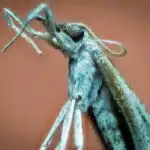
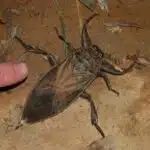

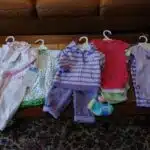






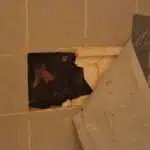




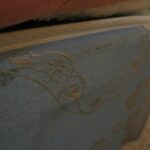
![How To Wash And Care For White Clothes 18 The only genuine borax soap cleanses hygienically saves the clothes and hands. 20 Mule-Team brand Boraxo white laundry soap [front]](https://green-life.blog/wp-content/uploads/2023/05/YDXLLCovnOjq-150x150.jpg.webp)



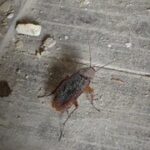
![How To Remove Perfume Odors From Clothes 23 For pungency, strength, durability and delicacy of odor. Read's Grand Duchess Cologne. [back]](https://green-life.blog/wp-content/uploads/2023/05/b-myfoHrx-jq-150x150.jpg.webp)





